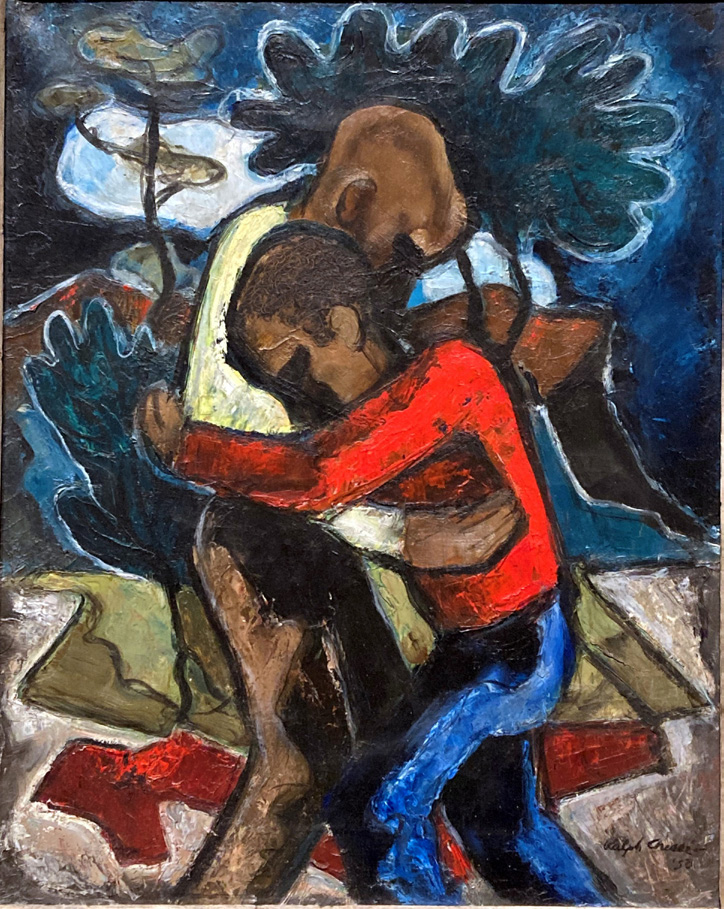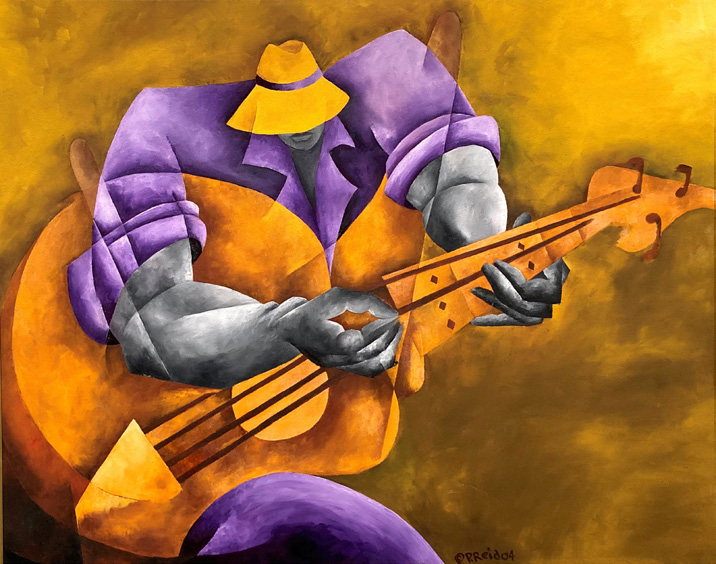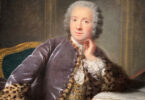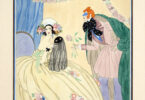Between 1900 and 1970, to escape often horrific racism and pursue new opportunities during the rise of American industrialism, at least 6 million African-Americans moved from Southern states to the Midwest, Northeast, and West in what sociologists have labeled The Great Migration. Of those, over 43,000 families migrated to the Pacific Northwest for jobs in the defense industries, especially shipyards and aircraft manufacturers. Indeed, by the 1970’s in Portland, Oregon’s Black population had increased by 300 percent and some of that population—including the children of early migrants—became the core of a now strong cadre of outstanding artists.
Over two dozen of those artists are on display through March 17, 2024, at the Portland Art Museum in an exhibition called “Black Artists of Oregon.” Carefully and insightfully curated by Intisar Abioto (herself an artist), the show is dominated by brilliant portraits, along with scenes of day-to-day life and visual responses to social concerns, including the death of George Floyd that sparked the widely-publicized riots in Portland during the summer of 2020.
But the exhibition asks the viewer to place these artists and their work in the context of the region. In 1859, Oregon became the only state ever to enter the Union with a Black exclusion law, which meant that Blacks who were already living there could remain, but no new Black individuals or families were allowed. Further, in the same year, Oregon introduced laws prohibiting Black people from owning property and making contracts. Those exclusion laws remained in effect until 1926, but even today, their echoes remain in ways both subtle and blatant. With that background in mind, many of the portraits are especially revealing.

Ralph Chessé, a self-taught artist who was born in 1900 and lived until 1991, experimented during his long career with a variety of styles from cubism to expressionism. Prodigal Son, from 1950, falls into the latter category. It portrays a father embracing his son—just as he does in the parable told in the Biblical Gospel of Luke. But Chessé’s bold lines and blocks of color accentuate an awkwardness; indeed, there may be more to this story of reconciliation than meets the eye. Chessé and his siblings were born and raised in New Orleans before the family moved West in 1928. They were a mixed-race family; some members identified with the French white culture of the Big Easy, and others with the Black culture of the region. Jim Crow laws and attitudes, including those the family found lingering in Oregon, split family members, and those who could pass as white did so. Over many generations, how does one reconcile that? The question then becomes, to whom or what is the prodigal son returning?

Another self-taught artist, Philemon Reid (1945-2009) painted Blues Time in 2004 a few short years before his death from pancreatic cancer. Born in Georgia, he spent nine years in military service, went to night college, and worked for many years at the Bonneville Power Administration headquartered on the Columbia River, finally settling outside Portland with his family in Vancouver, Washington. And through it all, he painted and sculpted the Black jazz and blues musicians—like John Coltrane or Miles Davis—who were his passion. Blues Time captures the color and movement of music in ways that are easily recognizable but seem to be a free-spirited jazz improvisation—a riff—on Cubist shapes and forms.

Arvie Smith (born in 1938) created Merry-Go-Round in 2020. The painting elaborates on depictions of the stereotypes that have evolved around Black people over the years. Long-standing racist tropes appear prominently, including a watermelon in the foreground, a principal figure with exaggerated facial features, and monkey faces in the wine glass and near the lightbulb. The merry-go-round has three riders—two naked white people and a Black king—surrounded by turbulent waters in which a Black man struggles to stay afloat. As always, Smith creates a powerful statement piece that leaves the principal character in the painting—and the viewer—with important—sometimes unanswerable—questions.

Portland artist and muralist Isaka Shamsud-Din (born 1940) created a memorable portrait of his father in 1976 titled Rock of Ages. According to the artist, “He was a master farmer, a magician with soils, raising bountiful crops… with horses and mules. In 1947, a group of armed white men took him from our [Texas] home, beat him, and left him for dead. But he survived, traveled to Vanport City, Oregon [a black community outside Portland] sending for his wife and ten children later. He moved to California in the 1960s and is posed in front of his garden.” A fascinating aspect to this portrait is the small rectangular mirror seen next to his head (the viewer’s right). Because the mirror is small, we are invited to move in close. As we look at the artist’s father, we also see ourselves standing next to him, thus making us contemplate our metaphorical and spiritual relation to this man.

One of the younger painters represented is Otis Quaicoe who was born in 1988 and moved to Portland from Ghana in 2017. His recent painting (2022) called Sir Jamal Smith is one of several Quaicoe works that examine Blackness and race in America from the point of view of an African immigrant. Interestingly, his recent paintings depict the nuances of skin tone in grayscale, which becomes a way for him to explore the meaning of skin color and how that often determines a person’s place in American society. This piece resembles a medieval or Renaissance court painting, but the subject is clearly modern (in this case a family friend living in Oregon). Quaicoe wants us to notice the thick impasto textures of the sky (that remind him of the stucco walls found in the homes of his native country), the deep reds of the drapery juxtaposed with Sir Jamal’s Levi hoodie, the incongruous sword and its sheath, and the nearly two-dimensional square tiles of the floor. All of it invokes the clash of opposites, a conversation about the African diasporic experience.
All of these paintings—and the many dozens more in this powerful show—challenge the viewer to place them in the context of Oregon. Because of the state’s acutely troubled history, this show becomes all the more commanding—a statement of resilience, survival, and success in a state that is still trying to deal with and overcome the sins—and deep stains—of its engrained racist past. G&S





Leave a Comment